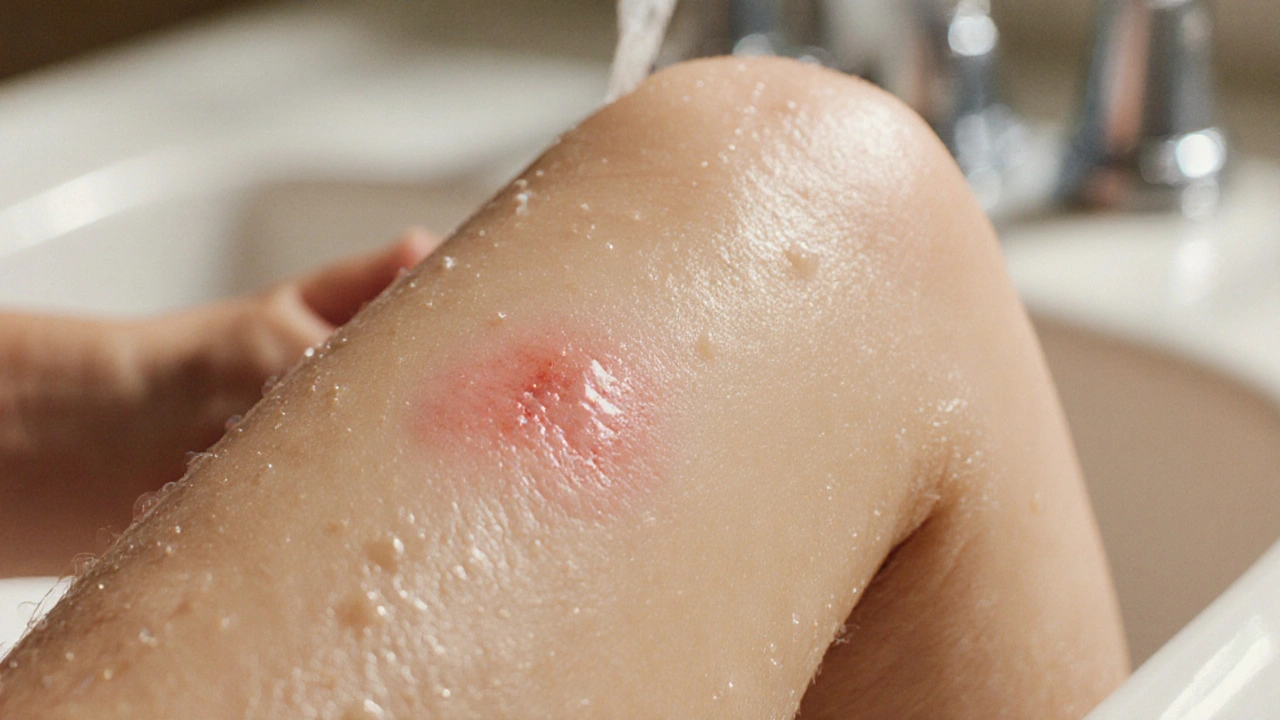Skin Infection Signs: What to Look For and When to Act
Skin infections can show up out of nowhere, but most of the time they give you a clear warning. If you notice a new sore, a rash that spreads, or sudden pain, it’s worth paying attention. The good news is that many signs are easy to spot, and catching them early can stop the problem from getting worse.
Common Warning Signs
The first clue is usually a change in the skin’s color. Redness that stays put or grows bigger is a red flag. It’s normal for a scrape to look pink at first, but if the pink turns deep red, spreads, or looks bruised, infection could be brewing.
Heat is another tell‑tale sign. Touch the area – if it feels hotter than the surrounding skin, inflammation is happening. Swelling often follows, making the spot look puffy or raised. Together, redness, heat, and swelling form the classic “triple threat” of infection.
Pain or tenderness matters too. A little sore is fine, but sharp, throbbing, or worsening pain means the body is fighting something. Watch for a feeling of pressure that doesn’t go away after a day or two.
Fluid or pus is a clear indicator. If you see a watery, yellow, or white discharge, the skin’s defenses are breaking down. Even a small blister that bursts and leaks fluid deserves attention.Fever is the body’s way of saying the infection might be spreading. A temperature above 100.4°F (38°C) paired with any of the skin changes above means you should act fast.
When to Seek Professional Care
If any of the signs above last more than 24‑48 hours, call a doctor. Don’t wait for the spot to get huge – early treatment often means a simple oral antibiotic instead of a stronger IV dose.
Certain situations need immediate help: rapid spreading of redness (often called “red streaks”), severe swelling that makes it hard to move a joint, or intense pain that wakes you up at night. These can signal a deeper infection that could affect the bloodstream.
People with diabetes, a weakened immune system, or poor circulation should be extra vigilant. Even a tiny cut can become serious for them, so a quick check‑up is wise.
For everyday wounds, keep the area clean with mild soap and water, apply a thin layer of antibiotic ointment, and cover with a clean bandage. Change the dressing daily and watch the signs listed above.
Remember, the skin is your first line of defense. By noticing redness, heat, swelling, pain, pus, or fever early, you give yourself the best chance to stop an infection before it spreads. Stay observant, keep basic first‑aid supplies handy, and don’t ignore persistent changes – your health depends on it.
Infection in Abrasions: Essential Facts and Care
Learn how infections develop in abrasions, spot warning signs, prevent bacterial growth, and treat infected scrapes effectively.
